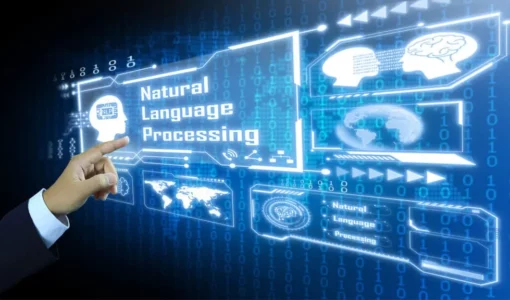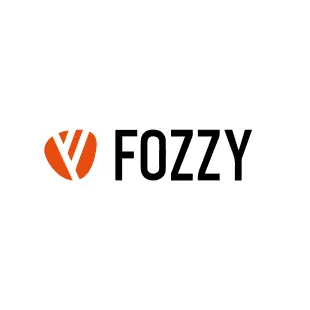Different spellings are currently in use, that include neural-symbolic and neurosymbolic, but also symbolic-subsymbolic and others – which we consider to be equal. The term neural in this case refers to the use of artificial neural networks, or connectionist systems, in the widest sense. The term symbolic refers to AI approaches that are based on explicit symbol manipulation. This in general would include things like term rewriting, graph algorithms, and natural language question answering.
However, the ASI concept assumes that AI evolves so close to human emotions and experiences that it understands them. As a result, it evokes its feelings, needs, beliefs, and desires in interaction. ANI has experienced many breakthroughs in the past decades, fueled by advances in ML and DL.
The second AI summer: knowledge is power, 1978–1987
But the approach started breaking down facing the complexity of the real world and the amounts of messy data in it. You just can’t define rules for every occuring case (even if we talk about detecting a dog on an image). Furthermore, some taks just can’t be transformed into rules, like Speech recognition or Natural Language Processing. Fast Data Science is at the forefront of hybrid AI and natural language processing, helping businesses improve process efficiency, among other things. Hybrid AI that’s based on symbolic AI capable of understanding actual knowledge like people do instead of just learning patterns – is the most effective way for enterprises to fully utilise and benefit from the data they’ve been feverishly collecting over the years.
- Alternatively, in complex perception problems, the set of rules needed may be too large for the AI system to handle.
- In this view, deep learning best models the first kind of thinking while symbolic reasoning best models the second kind and both are needed.
- A 2015 paper revealed that the engine had learned to outperform humans at 29 of the 49 Atari titles initially outlined.
- Holzenberger’s team and others have been working on models to interpret legal texts in natural language to feed into a symbolic logic model.
- We also looked back at the other successes of Symbolic AI, its critical applications, and its prominent use cases.
- On the other hand, Symbolic AI seems more bulky and difficult to set up.
Our framework was built with the intention to enable reasoning capabilities on top of statistical inference of LLMs. Therefore, we can also perform deductive reasoning operations with our Symbol objects. For example, we can define a set of operations with rules that define the causal relationship between two symbols. The following example shows how the & is used to compute the logical implication of two symbols. Conceptually, SymbolicAI is a framework that uses machine learning – and specifically LLMs – at its core, and composes operations based on task-specific prompting.
Neuro-symbolic AI for scene understanding
They can learn to perform tasks such as image recognition and natural language processing with high accuracy. Symbolic AI is an approach that trains Artificial Intelligence (AI) the same way human brain learns. It learns to understand the world by forming internal symbolic representations of its “world”.Symbols play a vital role in the human thought and reasoning process. We learn both objects and abstract concepts, then create rules for dealing with these concepts. These rules can be formalized in a way that captures everyday knowledge.Symbolic AI mimics this mechanism and attempts to explicitly represent human knowledge through human-readable symbols and rules that enable the manipulation of those symbols.
Combined with the Log expression, which creates a dump of all prompts and results to a log file, we can analyze where our models potentially failed. Neuro Symbolic AI systems are far from a fringe idea with a niche audience. Their most notable project is CLEVRER, a large video-reasoning database that can be used to help AI systems better recognize objects in videos, and track and analyze their movement with high accuracy. The 2017 paper introduced the “transformer,” a novel architecture that relied on a process called “attention.” At the highest level, a transformer pays “attention” to all of its inputs simultaneously and uses them to predict the optimal output. By paying attention in this way, transformers can understand context and meaning much better than previous models. In Borges’s story, successive generations realize the uselessness of a map the size of the territory.
Symbolic Reasoning (Symbolic AI) and Machine Learning
This in turn means that errors may occur, which we need to handle in a contextual manner. As a future vision, we even want our API to self extend and therefore need to be able to resolve issues automatically. To do so, we propose the Try expression, which has a fallback statements built-in and retries an execution with dedicated error analysis and correction. This expression analyses the input and the error, and conditions itself to resolve the error by manipulating the original code. Otherwise, this process is repeated for the number of retries specified. If the maximum number of retries is reached and the problem was not resolved, the error is raised again.
When all is done then the activated signal passes through the transfer function and produces one output. Remain at the forefront of new developments in AI with a vendor-neutral, time-bound Artificial Intelligence Engineering certification, and lead a revolution in AI, the tech of the century. Once it is smart enough, it can not only identify the object for which it was trained but can also make similar objects that may not even exist in the real world.
What are some common applications of symbolic AI?
The DSN model provides a simple, universal yet powerful structure, similar to DNN, to represent any knowledge of the world, which is transparent to humans. The conjecture behind the DSN model is that any type of real world objects sharing enough common features are mapped into human brains as a symbol. Those symbols are connected by links, representing the composition, correlation, causality, or other relationships between them, forming metadialog.com a deep, hierarchical symbolic network structure. Powered by such a structure, the DSN model is expected to learn like humans, because of its unique characteristics. First, it is universal, using the same structure to store any knowledge. Second, it can learn symbols from the world and construct the deep symbolic networks automatically, by utilizing the fact that real world objects have been naturally separated by singularities.
What is symbolic integration in AI?
Neuro-Symbolic Integration (Neural-Symbolic Integration) concerns the combination of artificial neural networks (including deep learning) with symbolic methods, e.g. from logic based knowledge representation and reasoning in artificial intelligence.
The hybrid AI system would capture the data in each claim and normalise it. For instance, if the right ankle is injured in an accident, symbolic AI can easily detect all synonyms, understand the underlying context and apply a code in regards to the body part involved. It’s a transparent process as it allows the insurer to see where the body part is coded with a snippet from the original report. There’s a huge efficiency gain to be had here although people will ultimately be making the final decision, of course.
📚 Symbolic operations
Prolog has its roots in first-order logic, a formal logic, and unlike many other programming languages. There have been several efforts to create complicated symbolic AI systems that encompass the multitudes of rules of certain domains. Called expert systems, these symbolic AI models use hardcoded knowledge and rules to tackle complicated tasks such as medical diagnosis.

What is symbolic logic examples?
If we write 'My car is not red' using symbols, we would write ¬A. In logic, negation changes an expression's truth value. So if my car is red, then A would be true, and ¬A would be false, or if my car is blue, then A would be false, and ¬A would be true.



